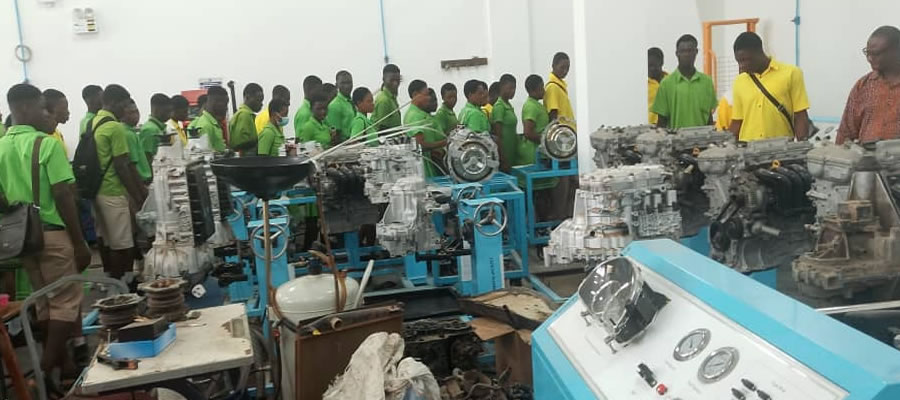

The supply of adequate quantities of potable water is one of the most critical issues for the future development and prosperity of a district. Without adequate and cheap water, the health of the people will suffer and industrial and commercial development will be retarded. The urban centre cannot attract investment without a strong industrial policy and without water no meaningful industrial programme can be initiated.
Taking cognizance of this fact, efforts have been made to provide nearly every Community in the District with a form of potable water source. On the whole there are 165 domestic pipes, 16 public standpipes, 170 boreholes and 158 protected wells serving the total of 75,375 people in the district and giving a nominal coverage of about 70%. Sandema and Chuchuliga have mechanized piped water systems whilst the other Communities have boreholes and hand-dug wells. The table below summarizes the main sources of drinking water to households in the district.
In spite of the seemingly high nominal coverage, the actual supply of water from these water systems is inadequate. In most cases, supply is limited to sections of the Communities such that most people resort to unprotected and unwholesome water sources. Generally, problems associated with potable water supply in the Builsa District among others include;
- Inadequate spare parts for hand pump
- High cost of hand pump spare parts
- Low level of water table in some communities
- Rocky nature of some communities, which makes it difficult to drill/sink, bore holes and hand-dug wells
Sanitation
Sanitation is considered in planning circles to be a sin-quo-non-to the health of a people after water. Regrettably this sector has not been given the much-needed attention in the Builsa District. No doubt the provision of sanitary facilities/services fall short of expected minimal standards. Available records of sanitation facilities/services in the district reveal the following.
- Septic Tank Latrine - - - - - - 6
- KVIP Toilets - - - - - --------- 5
- House-hold VIP Toilets ----- 48
- Public Urinals - - - - - - - - - 14
Inferring from the above, the few sanitary facilities listed cannot adequately serve a district with a population of 75,375 people. About 15.2% of the population uses private home latrines; another 6.3% uses public toilet facilities. The bulk of the population, about 78.5% however have no access to sanitary toilet facilities and resort to indiscriminate defecation in bushes, around compounds, etc, resulting in widespread pollution of water bodies, among others especially during the rainy season.
Again disposal of both solid waste and household sullage are not well organised. As seen from the tables 65.4% of households do uncontrolled dumping of refuse either in public dumpsites or elsewhere in the surroundings. Besides 88.1% of households throw wastewater either on streets or onto their compounds. The adverse health consequences of these practices are great and include widespread infestation of vermin, mosquitoes, housefly, etc. There is an urgent need for the District Assembly and the Communities to collaborate with other stakeholders and Development Partners in finding a lasting solution to the problem of waste disposal in the Builsa District.
Date Created : 11/20/2017 3:56:23 AM








 facebook
facebook
 twitter
twitter
 Youtube
Youtube
 +233 593 831 280
+233 593 831 280 0800 430 430
0800 430 430 GPS: GE-231-4383
GPS: GE-231-4383 info@ghanadistricts.com
info@ghanadistricts.com Box GP1044, Accra, Ghana
Box GP1044, Accra, Ghana